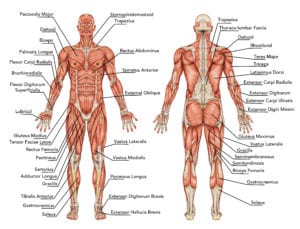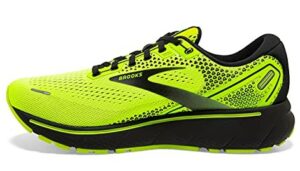The Human musculoskeletal system and Running
The average person desires to stay fit at all times. Staying fit doesn’t demand too much, it only requires that you eat well and perform the right exercises in the right way. Good running form can help an individual create physical, physiological, and psychological improvement.
Running is a common exercise people often engage in themselves. It can deliver the best fitness result when you do it the right way. Good running form is essential to obtaining efficient fitness results.
Running is not all about getting up, lacing your shoes, and moving at a fast pace. You must ensure the use of the right technique so that running exercise won’t do more harm to your body than good.
Proper running form is simply learning how to do your running the right way to obtain effective results. It involves maintaining good body positions and appropriate mental state. Running is a linear exercise; therefore, your body must align all through the process.
Good running form is essential for energy conservation, obtaining effective results, and protecting the body. If you engage in running exercise, then it is crucial to understand how to do it the right way.
What is Good Running Form?
Benefits of Maintaining Good Running Form
There are many advantages you can obtain if you maintain a good running form. These benefits highlight why individuals must utilize a good running method.
The core benefits of maintaining a good running form include;
- A good running form improves efficiency, makes running easier, and enhance your pace.
- It increases the flexibility and strength of certain body muscles that are crucial for maintaining fitness.
- The proper running form helps you mitigates the possibility of injuries and fatigue.
- It also ensures that you get the best result from your runs.
- Likewise, using the right form enhances endurance and induces a balanced mental and physical state.
How to Get and Maintain a Good Running Form
Now that you are aware of the amazing benefits of ensuring a good running form, putting it to practice should be a priority. Running requires you to use every part of your body. Therefore, getting the right running form involves keeping the body parts in the correct position throughout the activity.
Here are some powerful and practical tips that can help you to get and maintain a good running form.
1. Keep Your Head Up
One of the essential aspects of running that most people often overlook is keeping the head up and looking ahead. You should maintain a focus on the ground 10-20ft ahead of you, not ground directly below you.
Keeping your head up will prevent you from falling and helps you sight what is ahead of you. Also, it reduces excessive stress on your head by preventing it from jutting forward as you run. Ensure that your head aligns properly in the middle of your shoulders as you run.
2. Relax and Position Your Hands Properly
Your hands are essential body parts that you regularly use while running. Consequently, you must do everything to keep them from getting fatigued or draining lots of energy off you.
Ensure that your hands are as relaxed as possible. Tightening your fingers into fist will send tension from your hand straight to your shoulders and up to your neck. Therefore, you should try to keep your hand as relaxed as possible.
The best position for your hand is just somewhere above your waist. Avoid swinging your hands up to your chest to help you conserve energy. Keep your hand in a region where they are almost brushing your hips.
Keeping your arm at 90 degrees bend will also assist you in keeping your hands in the right position.
3. Be Conscious About Your Posture
Being careless about your posture while running will do more harm than good to your fitness goal. The proper position for running includes a leveled shoulder, keeping your back straight, and keeping your head up. The right posture is necessary for mitigating post-exercise fatigue.
Most runners often lose consciousness of their posture as they get tired. They tend to focus on finding the most convenient position for them. They tend to slightly slump the body over, a positioning that can result in shoulder, neck, and lower waist pain.
4. Proper Breathing
If you don’t want to get exhausted or gas out easily while running, then you should learn the right breathing technique. Proper breathing also boosts your endurance efficiency.
Proper breathing involves maintaining a relaxed inhale through your nose while you exhale through your mouth. This technique will help you avoid breathing too rapidly.
5. Don’t Stress Your Elbow
A common mistake from most runners is swinging their elbow joints instead of their shoulder joints. It is best to rotate your hands from your shoulder and not your elbow. Easing this unnecessary stress off your elbow will improve your performance and reduce fatigue.
Treat your arm like a simple pendulum and see the shoulder as the point of attachment. You can drag your elbow backward and give it the liberty of swinging towards you.
6. Balance Your Ankles and Feet
Ankles and feet are other active parts of the body while running. The soft landing you make while running rests most of your body weight on your ankle. Therefore, you must avoid an awkward landing as much as possible.
Keep your angle at approximately a 10-degree bend. Slightly lean forward on your ankle and ensure that you are landing softly.
For the feet, there is no recommended way of striking them against the ground. However, you must be sure that the striking gives you balance on the ground and projects you for the next step.
How to Fix Your Running Form
If you are an existing runner with poor running form, it is not too late to correct it. Fixing your running form will improve your chances of getting your desired result. It will also help you reduce the possibility and occurrence of fatigue and injury.
There are several ways you can fix your running form and they include:
- Pay attention to your existing running form and compare it to the proper way. The observation you make will assist you in pointing out the aspects that require corrections and adjustments easily.
- Ensure that you diligently and judiciously follow the guidelines for proper running form.
- Implement specific recommended exercises and stretches to correct your posture and induce flexibility.
- Be conscious of each correction and adjustments you make to your existing.
- You can slow down your running pace for a while to help you efficiently establish these changes and modifications. You can resume your normal speed gradually once you are used to the running form.
How Can a Beginner Improve Running Form?
The best scenario for beginners is adopting the best running form right from the beginning. Doing this makes it easier to choose the right technique and maintain the proper posture. Below are some of the tips that can assist beginners in improving their running form.
- Learn about the concept of good running form before your first try.
- Do stretching and joint exercises before your running.
- Start your running at a slow pace and short distance before increasing gradually. You can start with a fast pace walking to jogging, before moving on to sprinting and running.
- Run with suitable clothes and running shoes.
- Acclimate your body to the runs by giving your body recovery time in between.
Optimizing Your Running Form to Prevent Injuries
The importance of keeping yourself away from fatigue and injuries while running cannot be overemphasized. Often, people get themselves injured from running by losing focus, adopting poor running form, poor landing, as well as inappropriate clothing and/or shoes.
Paying attention to your running form and body positions will mitigate the possibility of getting injured during the run. Ensure that your body parts properly align to keep them in the right places.
Also, you should start your running gradually, particularly for beginners. You can do light muscle and joint exercises before kick-starting the run. For beginners, you can start with fast pace walking, before jogging, then running. You can also stretch out your body if you feel tight after the exercise.
Avoid a sudden increase in the tempo and frequency of your run. Whatever you want to do, it is essential to make it gradual. Likewise, you should give your muscles and joints time to recover by allowing suitable intervals in-between your runs.
Conclusion
Running is one of the essential fitness exercises anyone can engage in. However, you need to identify and utilize good running techniques to get the best results and stay injury-free.
A good running form is as essential as the desire to run. As a beginner, adopting the proper running form is the best way to kick-start your running experience. Also, improving running form is the best way to take running to the next level for existing runners.
Overall, you should adopt a good running form and develop core strength to support this form if you want to get the maximum benefit from running exercise.


























